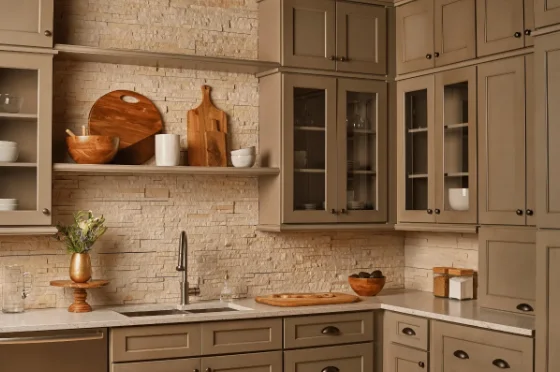What Are Wholesale Cabinets and How Do They Differ from Retail?
When it comes to upgrading a kitchen, bathroom, or workspace, cabinets are one of the most important investments. Many homeowners and contractors find themselves choosing between wholesale cabinets and retail cabinets, and understanding the difference can have a big impact on cost, quality, and project efficiency.
If you’re planning a renovation or working in the construction industry, learning what wholesale cabinets are—and how they differ from retail options—will help you make a smarter buying decision.
What Are Wholesale Cabinets?
Wholesale cabinets are cabinetry products sold directly to contractors, builders, or even homeowners at bulk or discounted rates, usually through a cabinet wholesaler or distributor. Instead of being sold one unit at a time in a showroom with marked-up pricing, wholesale cabinets are offered in larger quantities or at lower costs because they bypass multiple middlemen.
For example, a typical retail store might mark up the price of a cabinet by 25–50% to cover showroom expenses, marketing, and staffing. In contrast, wholesale suppliers often work directly with manufacturers, eliminating unnecessary markups and offering savings of 15–40% compared to retail prices.
The Key Difference Between Wholesale and Retail Cabinets
While both wholesale and retail cabinets serve the same purpose—providing storage and style—they differ in:
1. Pricing Structure
- Wholesale: Lower cost per unit, often with discounts for bulk purchases.
- Retail: Higher cost due to store overhead, sales commissions, and marketing expenses.
2. Buying Process
- Wholesale: Typically sold through distributors or directly from manufacturers; buyers may need to meet minimum order requirements.
- Retail: Sold individually to homeowners with no bulk requirement, making it accessible for smaller projects.
3. Customization Options
- Wholesale: Many wholesalers offer both stock and semi-custom designs, but high-end customization might be limited unless arranged directly with the manufacturer.
- Retail: Often provides more flexibility in customization, but at a higher price point.
4. Target Customers
- Wholesale: Designed for contractors, developers, interior designers, or homeowners working on large-scale renovations.
- Retail: Geared toward individual homeowners tackling smaller renovation projects.
Benefits of Choosing Wholesale Cabinets
1. Significant Cost Savings
Wholesale cabinets are an excellent choice for budget-conscious buyers. If you’re renovating multiple units—such as apartments, offices, or commercial spaces—the savings can quickly add up. A project requiring 20 cabinets at a retail cost of $500 each could cost $10,000 retail, but wholesale prices might bring that down to $6,500–$8,000.
2. High-Quality Options
Contrary to the myth that wholesale means “cheap quality,” many wholesale cabinets are built to the same standards as retail versions. In fact, they often come from the same manufacturers, just sold through a different channel.
3. Faster Turnaround
Because wholesale suppliers often keep popular styles in stock, they can deliver faster than retail outlets that may need to special-order products.
4. Ideal for Large Projects
If you’re furnishing multiple kitchens or bathrooms, wholesale cabinets ensure consistency in style, finish, and material while saving money.
Potential Drawbacks of Wholesale Cabinets
While wholesale cabinets have many advantages, they may not be right for everyone.
- Minimum Orders: Some wholesalers require a certain quantity to get the discounted rate.
- Limited Showrooms: You may not have as much in-person selection as in retail stores.
- Fewer Design Services: Retailers often include free design consultations, which some wholesale suppliers do not provide.
Tips for Buying Wholesale Cabinets
If you decide that wholesale is the right route for your project, here are some tips to ensure you get the best results:
- Work with a Reputable Supplier – Read reviews, ask for references, and check product warranties.
- Inspect the Materials – Look for solid wood frames, durable hardware, and quality finishes.
- Know Your Measurements – Wholesale purchases often have less room for returns, so accurate measurements are critical.
- Ask About Delivery Options – Some wholesalers offer local delivery, while others may require you to arrange transportation.
- Plan Ahead – Order early to ensure availability, especially for large projects.
Wholesale vs. Retail: Which Should You Choose?
The choice between wholesale cabinets and retail cabinets depends on your project size, budget, and customization needs.
- Choose Wholesale Cabinets If:
- You are a contractor, property manager, or homeowner doing a large renovation.
- You want to save on costs without compromising quality.
- You can manage design and measurement on your own or through a hired designer.
- You are a contractor, property manager, or homeowner doing a large renovation.
- Choose Retail Cabinets If:
- You are working on a small, one-off project.
- You need in-store design help and hands-on selection.
- You prefer paying for convenience and customization flexibility.
- You are working on a small, one-off project.
Final Thoughts
Wholesale cabinets offer a cost-effective, high-quality option for homeowners and contractors alike—especially for larger projects. They provide the same durability and style as retail cabinets but at a fraction of the price, thanks to their streamlined supply chain.
By understanding the difference between wholesale and retail options, you can make a more informed decision and maximize your renovation budget without sacrificing quality or style. Whether you’re outfitting one kitchen or twenty, wholesale cabinets can help you achieve a beautiful, functional space that meets both your aesthetic and financial goals.
Keep an eye for more latest news & updates on Phmhaven!






